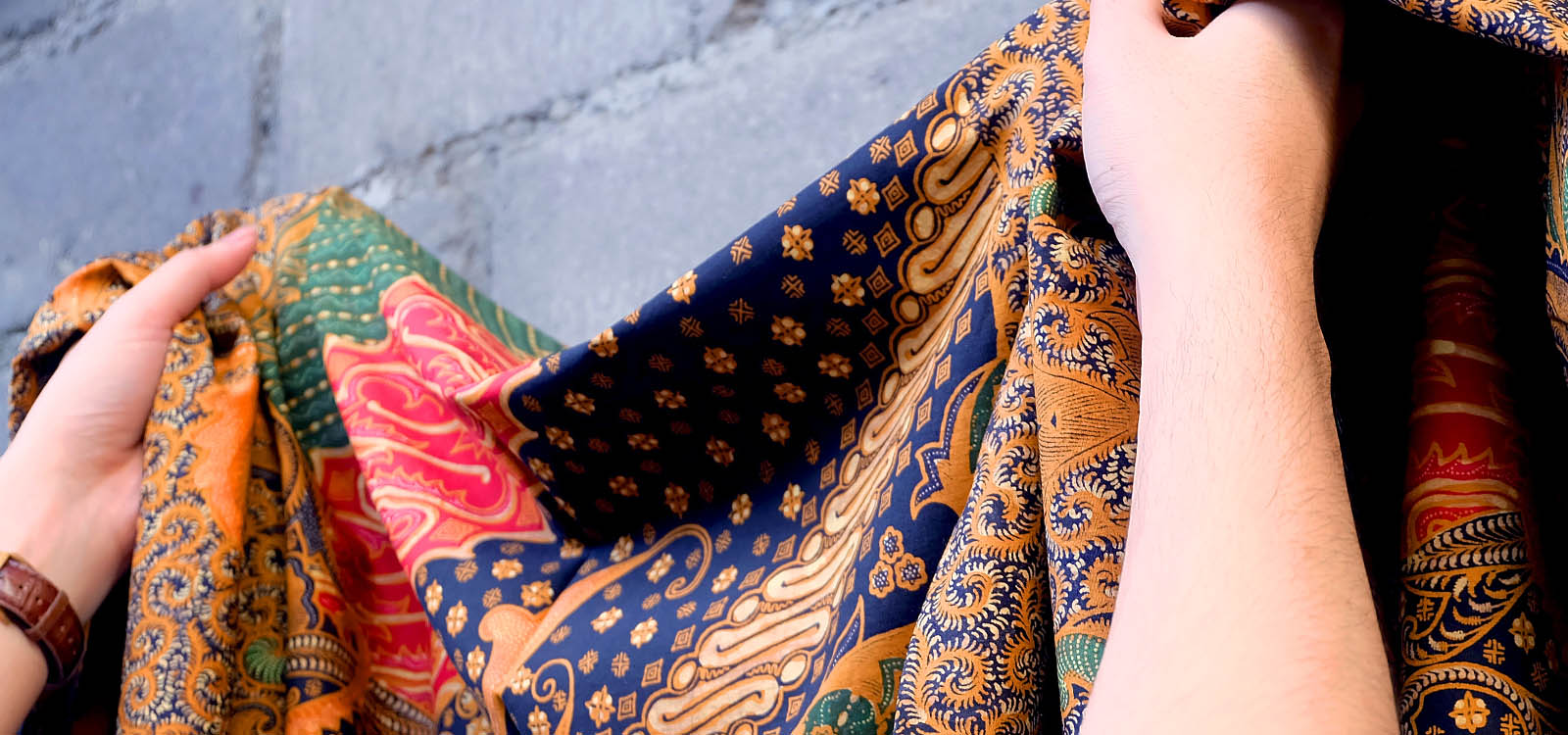
From the initial sketch to the final fabric, creating one-of-a-kind batik is an elaborate process, requiring many steps by many expert hands; while also complying with the highest standards of safety for our employees using certified chemicals and supplying appropriate safety equipment.
To maintain our standard of high quality batik production, each step in making batik has its own quality control procedure.
 First, we prepare the chosen black and white artwork to make it suitable for making the copper batik stamp (cap batik). The stamp maker then translates the artwork into copper using traditional tools – snips, pliers, divider and mallet. This process takes between 5-10 days, depending upon the complexity of the design. Once the copper stamp is ready, we can proceed with the wax application on the fabric. Before we begin stamping, we prepare the fabric for dying by washing it multiple times to remove milling oil and other residue remaining from the weaving process. We apply the pattern to the fabric using layers of dye and wax, yielding a multi-layer colored batik fabric.
First, we prepare the chosen black and white artwork to make it suitable for making the copper batik stamp (cap batik). The stamp maker then translates the artwork into copper using traditional tools – snips, pliers, divider and mallet. This process takes between 5-10 days, depending upon the complexity of the design. Once the copper stamp is ready, we can proceed with the wax application on the fabric. Before we begin stamping, we prepare the fabric for dying by washing it multiple times to remove milling oil and other residue remaining from the weaving process. We apply the pattern to the fabric using layers of dye and wax, yielding a multi-layer colored batik fabric.
When creating multiple layers of color, the process involves careful consideration of how dye colors interact with each other and each dye color’s ability to be discharged. In general, the process usually yields best results by dyeing the color layers from lightest to darkest.
To begin stamping, the fabric is laid out on a specially prepared table, which has been padded to improve even distribution of wax. Next the block is lightly dipped in hot wax and then stamped onto the fabric; this action is repeated to fill the entire width and length of the fabric.
The fabric is then discharged (color is removed) from all areas of the fabric that are not stamped with wax. The areas covered with wax protect and retain the color of the first dye bath, although they will show small “cracks” (depending on the difficulty of the design being stamped) when the final dye application is made.
Understanding the chemistry of the dyes and discharge agents is crucial to making a beautiful batik. Careful records of what the fabric looks like at each step is important to being able to reproduce the desired results. In addition, accurate recipes and measuring of dye for each color are equally important. We control as many factors as possible in order to deal with the complication of constant weather variations, which affects the results.

The last step is to remove the wax. To do this, we immerse the fabric in boiling water with special chemicals to help remove the wax.
Once all the steps are finished, the fabric is dried and then put through our commercial in house finishing machine which produces a nice soft hand on the fabric. The fabric is then dried and wound onto rolls for shipment from our factory.
The amount of time needed for an order from start until completion can take up to four months. For international orders, we require a minimum order of 800 meters per fabric.